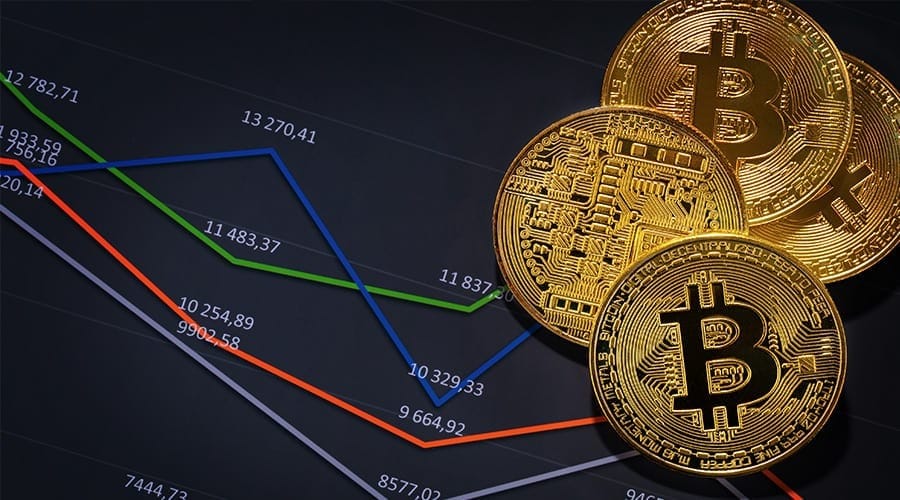Bitcoin Price Surge & Crypto Market Trends
Bitcoin Price Surge & Crypto Market Trends: What’s Driving the Growth?
Introduction
The cryptocurrency market has once again caught the attention of investors worldwide as Bitcoin experiences a significant price surge. As the pioneer of digital currencies, Bitcoin often sets the tone for the broader crypto market. With increased institutional interest, favorable macroeconomic conditions, and growing adoption, the crypto space is showing strong bullish momentum. In this blog, we will explore the key reasons behind Bitcoin’s price surge and analyze the latest trends in the crypto market.
Bitcoin’s Price Surge: Key Factors
Bitcoin’s price is influenced by a combination of market demand, supply constraints, and macroeconomic conditions. Let’s delve deeper into the primary factors fueling this rally:
1. Institutional Adoption & Investment
- Major financial institutions, hedge funds, and corporate entities are investing in Bitcoin as a hedge against inflation and currency devaluation.
- Bitcoin ETFs (Exchange-Traded Funds) have gained regulatory approval in multiple regions, making it easier for investors to gain exposure to Bitcoin.
- Companies like Tesla, MicroStrategy, and Square have allocated portions of their balance sheets to Bitcoin, increasing market confidence.
2. Halving Event & Supply Scarcity
- Bitcoin operates on a fixed supply of 21 million coins, and its supply is further constrained by the halving mechanism.
- The next Bitcoin halving is expected in 2024, reducing mining rewards from 6.25 BTC to 3.125 BTC per block.
- Historical data suggests that Bitcoin tends to experience bullish runs after halving events due to reduced supply and increased demand.
3. Macroeconomic Conditions & Inflation Hedge
- With rising inflation, traditional fiat currencies are losing purchasing power, prompting investors to seek alternative assets like Bitcoin.
- Bitcoin is often compared to digital gold, with investors viewing it as a store of value during economic uncertainty.
- Central banks’ monetary policies, such as interest rate cuts and quantitative easing, have increased liquidity in financial markets, indirectly benefiting Bitcoin.
4. Rising Adoption & Mainstream Acceptance
- Countries like El Salvador have adopted Bitcoin as legal tender, setting a precedent for broader crypto acceptance.
- Payment platforms like PayPal, Visa, and Mastercard now support Bitcoin transactions, making it more accessible for retail users.
- DeFi (Decentralized Finance) and Web3 innovations are expanding Bitcoin’s use cases beyond just a speculative asset.
5. Market Demand & Supply
- Bitcoin’s fixed supply of 21 million coins creates scarcity, making it more valuable as demand increases.
- Speculation by traders and investors can lead to sudden price swings, as buying and selling pressure fluctuate in response to market conditions.
- Bitcoin mining difficulty adjustments also impact supply, affecting how quickly new coins enter circulation.
6. Macroeconomic Conditions
- Economic uncertainty, geopolitical tensions, and financial instability contribute to Bitcoin’s appeal as a decentralized asset.
- During times of inflation or currency depreciation, investors turn to Bitcoin as a hedge against traditional financial risks.
- The global adoption of digital assets is influenced by central bank policies, such as monetary expansion or interest rate hikes, which can either boost or slow down crypto investments.
7. Institutional Involvement
- Large-scale institutional investors, including hedge funds and asset managers, are increasing their exposure to Bitcoin.
- Bitcoin ETFs have been introduced in various countries, allowing traditional investors to participate in the crypto market without directly owning BTC.
- Institutional participation enhances Bitcoin’s legitimacy and reduces volatility over time, making it a more attractive asset for long-term holding.
8. Regulatory Developments
- Government policies play a crucial role in shaping the crypto market’s future.
- Some countries are embracing Bitcoin with favorable regulations, while others impose restrictions that cause temporary price fluctuations.
- Compliance with anti-money laundering (AML) and know-your-customer (KYC) requirements affects trading volumes and liquidity in the market.
9. Technological Advancements
- Bitcoin’s Lightning Network is improving transaction speeds and reducing fees, enhancing its use as a medium of exchange.
- Ethereum’s transition to Proof-of-Stake (PoS) has set a precedent for more energy-efficient blockchain solutions, influencing Bitcoin discussions on sustainability.
- Layer-2 scaling solutions and cross-chain compatibility projects are driving innovations that enhance Bitcoin’s utility and market adoption.

Bitcoin’s Latest Rally: Will It Hit $100K in 2025?
Bitcoin’s recent rally has fueled speculation that it could reach $100,000 by 2025. Several factors support this bullish outlook:
- Historical Patterns: Previous bull runs have shown that Bitcoin tends to achieve new all-time highs after each halving cycle.
- Institutional Growth: With more hedge funds, asset managers, and corporations adopting Bitcoin, demand is expected to rise significantly.
- Macroeconomic Shifts: If inflation remains high and central banks continue monetary easing, Bitcoin’s value as a hedge will strengthen.
- Technological Developments: Improved scalability solutions like the Lightning Network and increased adoption of Bitcoin for payments can further boost its value.
- Regulatory Clarity: A clear regulatory framework in major markets like the U.S. and Europe could attract more investors, pushing Bitcoin toward the $100K milestone.
While Bitcoin’s volatility remains a key factor, these indicators suggest that a six-figure price target is not out of reach. However, investors should be prepared for potential corrections and market fluctuations along the way.
Crypto Market Trends: What’s Next?
While Bitcoin remains the dominant player, the broader cryptocurrency market is witnessing significant developments. Let’s examine the latest trends in the crypto industry:
1. Altcoin Rally & Ethereum’s Growth
- Ethereum (ETH) continues to be the second-largest cryptocurrency, with growing adoption in decentralized applications (DApps) and smart contracts.
- The shift to Ethereum 2.0 and the Proof-of-Stake (PoS) consensus mechanism is expected to improve scalability and reduce energy consumption.
- Layer-2 scaling solutions such as Polygon (MATIC) and Arbitrum are gaining traction, enhancing the efficiency of blockchain networks.
2. DeFi & Decentralized Applications
- The DeFi market is expanding rapidly, offering financial services like lending, staking, and yield farming without intermediaries.
- Popular DeFi platforms include Aave, Uniswap, and MakerDAO, driving innovation in the financial ecosystem.
- Institutional investors are exploring DeFi opportunities, further legitimizing the sector.
3. NFTs & Metaverse Growth
- Non-Fungible Tokens (NFTs) have revolutionized digital ownership, impacting industries like gaming, art, and entertainment.
- Platforms like OpenSea, Rarible, and Axie Infinity are leading the NFT space, attracting millions of users.
- The metaverse concept, supported by blockchain technology, is gaining momentum with companies like Meta (formerly Facebook) investing heavily in virtual reality.
4. Regulatory Developments & Compliance
- Governments and regulatory bodies are introducing crypto regulations to ensure investor protection and prevent illicit activities.
- The SEC, CFTC, and other authorities are working on clearer guidelines for cryptocurrency taxation, trading, and securities classification.
- While some regions impose strict regulations, others, like Dubai and Singapore, are emerging as crypto-friendly hubs.
Conclusion
Bitcoin’s price surge and the evolving trends in the crypto market indicate a strong demand for digital assets. As institutional adoption grows, technological advancements continue, and mainstream acceptance expands, Bitcoin and cryptocurrencies are set to play a more significant role in the global financial landscape. However, investors should remain cautious and conduct thorough research before making investment decisions in this highly volatile market.
Stay tuned for more updates on Bitcoin, blockchain, and cryptocurrency trends as the market continues to evolve!
To know more coins like pi coin, click here.






